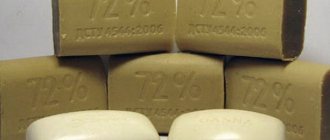Thrush in diabetes is a fairly common fungal infection. This is explained by the fact that diabetes mellitus leads to metabolic disorders and blood microcirculation processes, as a result of which tissue hypoxia is formed. Resistance is reduced, suitable conditions are created for the proliferation of pathogenic microorganisms and the development of many infections, including fungal diseases. Increased blood sugar levels transform the mucous membranes, turning them into a convenient environment for bacteria and fungi. Candidiasis in diabetes is recorded more often than other fungal infections. The disease in diabetes is much more aggressive, affecting both women and men with equal frequency.
In diabetes, due to disruptions in blood flow, the elasticity of the skin decreases, the mucous membranes lose normal moisture, and it is these changes that provoke the manifestation of the first symptoms of thrush - itching in the genital area and anus.
Causes of thrush
There are certain factors that contribute to the development of thrush in diabetes.
The main ones:
- Dryness of the skin and mucous membranes, leading to the appearance of microcracks;
- Decreased body resistance;
- A sharp shift in the acid-base balance of the vagina to a neutral and even alkaline environment;
- Hormonal disruptions due to endocrine system disorders, also caused by taking contraceptives;
- Chronic urogenital infections;
- The body's predisposition to allergic reactions;
- Long-term use of antibiotics;
- Climate features (hot and humid weather);
- Tight underwear made of synthetic materials;
- Failure to maintain intimate hygiene;
- Pregnancy period, due to low immunity;
- Poor nutrition.
Doctors believe that diabetes mellitus is the most influential factor provoking the development of thrush.
Thrush is transmitted during sexual intercourse when one of the partners carries an aggressive strain of microorganisms.
Some patients, discovering such symptoms, independently diagnose the disease and begin treatment at home, randomly choosing remedies, which is very dangerous for health.
It must be remembered that thrush and diabetes mellitus are a rather alarming combination, leading to serious complications and inflammatory diseases of the organ systems. Examination by a specialist and proper treatment can quickly get rid of a dangerous infection.
Symptoms of itching depending on its location
Due to a violation of fat metabolism, yellow plaques often form on the legs and arms.
They may itch and cause irritation. Often such defects are concentrated on the bends of the limbs or slightly lower. Diabetes mellitus can also be accompanied by blisters localized on the toes and hands, in the ankle area and perineum. Their size can range from a couple of millimeters to several tens of centimeters.
Dermatopathy often affects the skin of the lower leg. It looks like red-brown bubbles, as can be seen in the photo. Such formations can not only itch, but also become pigment spots.
Symptoms in women
When a woman develops thrush against the background of diabetes mellitus, a gynecologist and endocrinologist are involved in treatment.
The main symptoms of the disease in women are:
- Burning and itching, as well as other inflammatory signs in the genital area;
- Vaginal discharge;
- Pain when urinating;
- Pain during intercourse;
- Formation of white areas on the mucous membranes of the genital organs.
When thrush appears in the oral cavity, a change in the appearance of the oral mucosa is recorded (the appearance of a white film in the form of plaque).
Constantly high blood sugar can cause many complications, including gangrene. Diabetic wounds take a long time to heal, increasing the risk of bacterial or fungal infection entering the body.
In women with diabetes, thrush of different locations may appear, but genital thrush is more common than others.
Nature of the discharge
Clots of mucus that spontaneously discharge from the vagina are classified based on the site of their formation, as well as the nature of their origin, namely:
- cervical (accumulate in the cervix area),
- vaginal,
- tubular,
- uterine,
- vestibular leucorrhoea.
The last type of discharge occurs in women who are not yet aware of their possible diagnosis, or the endocrine disease is ignored, and the glucose level is not reduced with medications.
Causes of thrush in men
The following factors are identified that stimulate the development of candidiasis in men:
- Psycho-emotional stress;
- Endocrine diseases;
- Blood diseases;
- Cancer diseases that reduce the body's resistance;
- Lack of vitamins, microelements;
- Severe hypothermia of the body;
- Long-term use of antibiotics, steroid hormones - corticosteroids;
- Excessive insolation, excessive number of visits to the solarium;
- Overweight, metabolic disorders. In subcutaneous fat tissue, candidiasis develops quickly; such an environment is very convenient for the fungus.
Symptoms of thrush in diabetes mellitus in men
In 15% of men, candidiasis can be asymptomatic.
A fungal infection can appear on the penis, skin, or in the oral cavity. A generalized manifestation of candidal stomatitis or cutaneous candidiasis indicates a primary or secondary immunodeficiency.
Symptoms in men are as follows:
- Swelling and redness of the glans and foreskin of the penis;
- Pain during erection, during sexual intercourse;
- Burning, pain when urinating;
- Thick gray-white coating with a sour odor.
With candidal balanoposthitis the following are observed:
- Pasty masses on the head of the penis;
- Swelling of the glans and foreskin;
- Unpleasant sour odor;
- Itching, pain, severe hyperemia of the skin in the penis area;
- Increased libido due to irritation of nerve endings in the affected area, accompanied by discomfort and pain during sexual intercourse.
Candidal urethritis manifests itself with the above symptoms and pathology, when the urine is cloudy and mixed with blood. A man may observe a morning thick mucous discharge with long threads (white).
With candidal pyelocystitis (a complicated form of thrush), when a fungal infection affects the urinary tract, cystitis and polynephritis are observed. Most often, this infection develops in parallel with mixed infections such as Enterobacteriaceae, Proteus, Chlamydia, Klebsiella.
Diabetes mellitus and menstrual irregularities
The main indicator of a woman’s health is the presence of a regular menstrual cycle , since it is monthly menstruation that indicates the potential ability of the female body to bear a pregnancy.
- According to statistics, only half of patients of childbearing age with diabetes can boast of having a regular ovulatory menstrual cycle. The other half of the patients showed all sorts of disturbances in its course. The presence of one or another menstrual cycle disorder is determined by the severity and duration of diabetes mellitus. Menstruation in diabetes mellitus:
- may be absent (the phenomenon of amenorrhea),
- be extremely short-lived and meager (in the case of oligomenorrhea),
- or, on the contrary, due to extreme duration and heavy blood loss, they can cause iron deficiency anemia (as with hyperpolymenorrhea).
- With diabetes, puberty in girls occurs a couple of years later.
- Women who have had diabetes for a decade and a half experience pronounced ovarian dysfunction.
- Taking too large doses of insulin provokes serious disruptions in the monthly cycle (from irregular and single-phase periods to uterine bleeding).
The role of fats in the diet of diabetics. Which fats are healthy and which ones should you avoid?
Complications of diabetes: diabetic foot - causes, symptoms, treatment. Read more here.
Knowing about the likelihood of problems with menstruation and the short period of reproductive function in diabetes mellitus, a woman with diabetes should not delay planning pregnancy and having children. The sooner she does this, the fewer problems it will be associated with.
It was experimentally found that taking optimal doses of insulin helps restore and regulate the menstrual cycle. That is why the dosage of insulin must be adjusted on a strictly individual basis. This is especially important for girls at puberty and for women planning to become pregnant.
Treatment of thrush in diabetes type 1, type 2
Type 1 diabetes is medically known as insulin-dependent. This name is due to the fact that such patients require regular injections of insulin as replacement treatment. This type mainly affects children and people under 40 years of age.
This type of diabetes is inherited and is often combined with other autoimmune pathological manifestations.
Type 1 diabetes is expressed as:
- thirst;
- frequent urination;
- constant hunger;
- weight loss, even exhaustion.
The development of candidiasis is facilitated by the specificity of metabolic processes. This type is typical for overweight people and over 40 years of age. Thirst and excessive urination may not bother the patient, but symptoms such as skin or vaginal itching are often observed.
Treatment of thrush in both type 1 and type 2 diabetes should begin with normalizing blood sugar levels, which will stop the proliferation and spread of the fungus. Diet is important in this regard. In most cases, symptomatic, preventive therapy is carried out, thus preventing possible complications.
In order to reduce itching, pain and irritation in areas affected by the fungus, take baths with soda before taking medications. It is necessary to treat the genitals after each visit to the toilet, since the remains of feces serve as an optimal environment for the proliferation of fungi.
To treat thrush in diabetes, local preparations in the form of suppositories and ointments are used.
If a woman experiences thrush for the first time, suppositories are prescribed:
- Livarol;
- Gino - digested;
- Micogal.
The candles should be used for 5 days.
This course also includes oral administration of Fluconazole at a dose of 150 g (1 time per day).
For chronic thrush, suppositories should be taken for at least 10 days, and then preventive courses should be repeated for 6 months 5 days before the start of menstruation. Fluconazole should be taken for 7 days.
For candidiasis in men, ointments or creams are prescribed. Treatment should be carried out until symptoms disappear completely.
For oral administration use:
- Linux;
- Lactovit forte;
- Yogurt in tablets or capsules.
These medications restore normal microflora, inhibiting the process of fungal reproduction. Drugs that enhance immunity are also recommended.
If thrush recurs, accompanied by symptoms of damage to the lungs or intestines against the background of diabetes, it is mandatory to take Fliconazole or Orungal for 15 days. This course of treatment is repeated once a month. In some cases, treatment lasts a year.
It is very important, simultaneously with the recovery course, during the period of treatment of thrush, to carefully monitor the blood sugar ratio. Its sudden increase will cause severe itching and burning in the intimate areas, accompanied by dryness and irritation of the affected areas. In such conditions, the growth of the fungus is more active; if restoration measures and subsequent prevention are not started in a timely manner, the fungal infection will spread throughout the body, eventually affecting other organs.
Prevention
To prevent the development of candidiasis in diabetes, it is important to follow certain preventive measures:
- Toilet your genitals every day. Urea residues are a good nutrient medium for various microorganisms. For hygiene, you should use products that have a neutral pH level.
- If you have casual sex, use contraceptives to prevent possible infection.
- Wearing underwear made from natural fabrics will help prevent diaper rash, chafing, which causes inflammation and other diseases.
- Lead an active lifestyle and diet.
- If you are undergoing long-term treatment for colds, viral or other diseases that contribute to the development of diabetes, you should additionally take medications containing lactobacilli.
The described preventive measures must be followed not only to prevent the disease, but also during therapy to prevent relapse.
Metabolic disorders leading to the development of diabetes mellitus negatively affect not only carbohydrate metabolism, but also all other functions of the body.
With diabetes, there is a sharp decrease in a person’s immune abilities. The body can no longer fully resist pathogenic agents, which is why diabetics often suffer from infectious diseases. These can be bacterial, viral diseases, and sometimes fungal diseases. In addition, elevated glucose levels in themselves provide a favorable environment for certain types of microbes. A typical example of an aggressive fungal pathology is thrush.
Treatment with folk remedies
The use of folk remedies for the treatment of thrush in diabetes is permitted only as an addition to the therapeutic course of treatment. Many medicinal herbs, berries, soda, garlic help to quickly cure a fungal infection.
Soda solution
Soda treatments should be carried out within 15 days. After 5 days, the symptoms disappear, and continuation of the procedures helps to strengthen the positive results.
2 tbsp. l. dissolve soda and a few drops of iodine in water and douche with the solution 2 times a day. After applying the solution, you need to lie on your back with your legs raised up.
Camomile tea
Chamomile is a natural antiseptic and is very effective for treating candidiasis.
3 tbsp. l. chamomile flowers are poured with 1 liter of boiling water. After two hours of infusion, the resulting infusion can be used for douching. The combined use of chamomile infusion with preliminary pinching with an iodine-soda mixture is recommended.
An infusion of chamomile, calendula and sage also provides excellent results. To do this, mix all the plants in equal quantities, take 1 tbsp. l. and fill with warm water. Use this tincture first for rinsing, then for douching.
Tea tree and calendula
Mixed calendula and tea tree oils in equal proportions are applied to a tampon, inserting it into the vagina at night. In the morning, after removing, wash with infusion of calendula or chamomile.
Viburnum or carrot juices
Viburnum juice is used to treat areas affected by fungal infection.
Carrot juice is diluted in equal proportions with boiled water and douched.
Garlic
The antimicrobial property of garlic allows you to successfully fight fungal infections.
From two cloves of garlic you need to get a paste, which is diluted with a liter of boiling water. Afterwards, the mixture is infused and douched in the morning and evening.
Tampons with kefir and a brown-glycerin mixture are also useful.
Prevention
Primary prevention of diabetes should begin with controlling the amount of carbohydrates in the diet and maintaining standard glucose levels. It is necessary to exclude yeast and moldy cheese, alcohol, seasonings, and spicy foods from the diet.
Underwear should be chosen from natural materials (cotton). Wearing tight underwear or thongs is not recommended. Women are advised not to use tampons. Polyurethane condoms are recommended as contraceptives.
Linen should be washed with products containing chlorine.
For intimate hygiene, you should not use perfumed products or pads. Giving up panty liners is the right decision. If this is not possible, you need to apply a few drops of tea tree oil to the pads and change them quite often.
The washing procedure should be carried out 2 times a day. For this you need to use solutions of soda and potassium permanganate, as well as decoctions of medicinal herbs (chamomile, lavender, sage, tea tree).
During the treatment period, sexual intercourse should be abolished.
You need to quit smoking, take frequent walks in the fresh air, and monitor normal bowel function.
If there is a need to take antibiotics, such treatment should be combined with antifungal prophylaxis. Such precautions are also relevant for women taking hormonal drugs during menopause, as well as for patients using contraceptives.
After curing thrush, patients with diabetes should undergo a medical examination every 6 months and undergo tests in order to prevent the development of relapses of candidiasis.
Proper nutrition, personal hygiene, an active lifestyle and careful attitude to your health will help you quickly overcome thrush and other characteristic signs of diabetes.
Risk factors
Thrush is an infectious disease caused by the yeast-like fungus Candida. Such an infection can occur not only in patients with diabetes, but also in healthy people. The fungus is considered part of the natural microflora of the vagina, intestines and mouth.
In cases of failure of the hormonal system and accumulation of potassium in the blood above normal, the fungus changes its properties. In diabetes mellitus, the diabetic's elevated glucose level becomes a breeding ground that promotes the active growth of fungal disease.
In type 2 diabetes, the risk group for which thrush is diagnosed includes the following categories of people:
- elderly patients with problems with excess weight;
- girls carrying a child;
- lovers of sweets;
- sedentary patients;
- smokers.
We suggest you read: Causes of errors when working with a glucometer
Also, additional factors that increase the risk are:
- weak protection of local immunity due to congenital problems - the production of insufficient amounts of substances that enhance local immunity;
- problems with the endocrine system - thyroid disease, excess weight, diabetes;
- gynecological diseases;
- use of antibiotics and other medications without the permission of a specialist;
- violation of personal hygiene rules, wearing tight synthetic underwear;
- use of intrauterine contraceptives.











